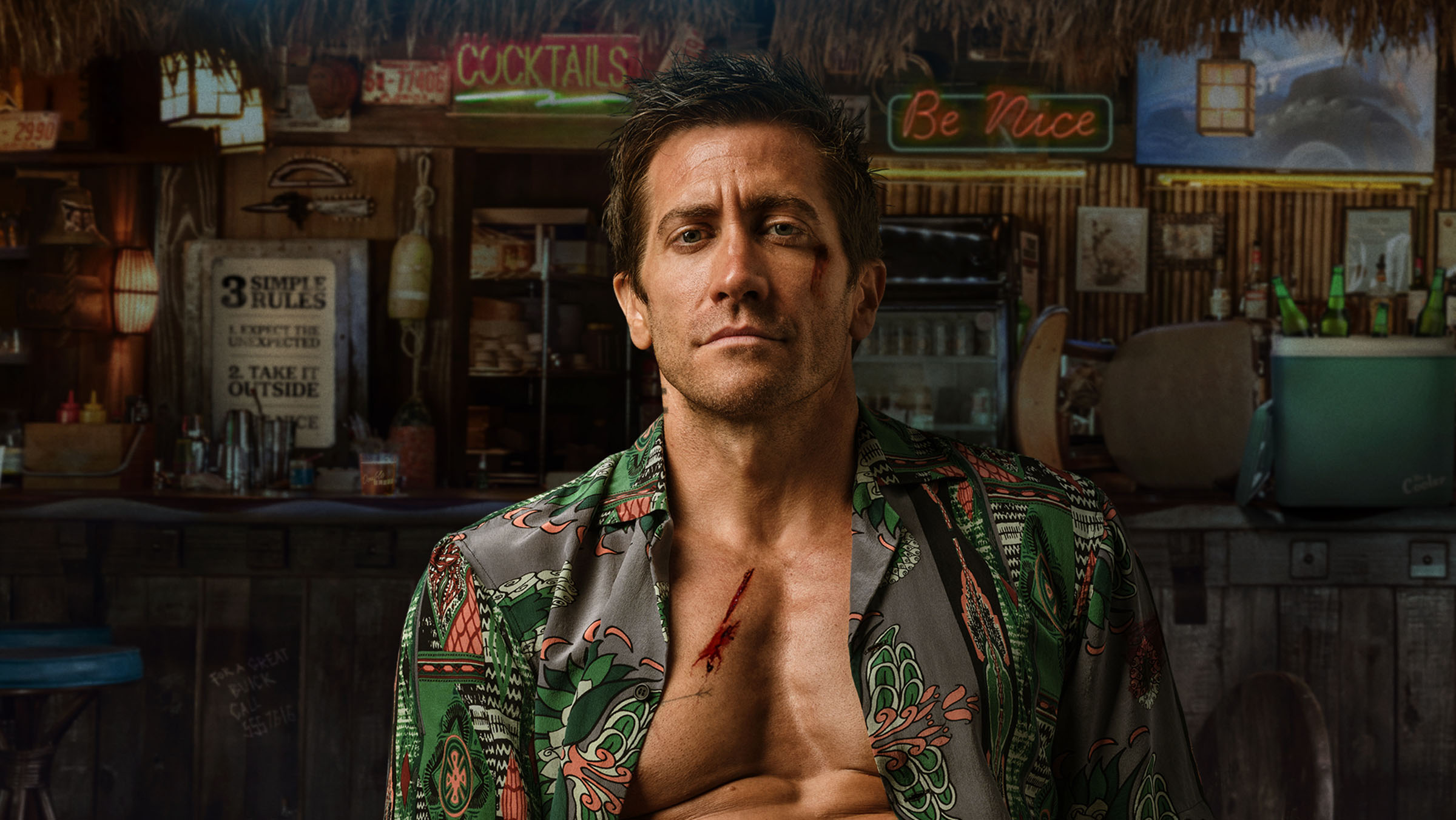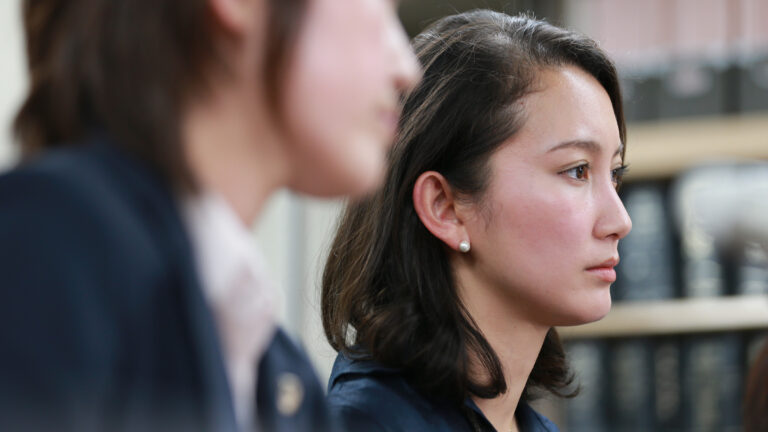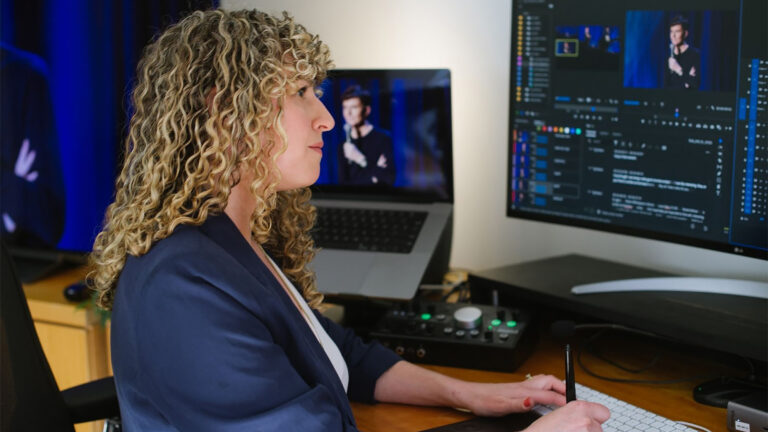Road House editor Doc Crotzer, ACE got his first real studio feature film experience by cutting Doug Liman’s Sci-Fi/Fantasy film, Chaos Walking (2021). Three years later, Doug would tap Doc once again to take the film fight game to another level for Liman’s latest entry in the action genre.
Summary for Road House
Directed by Doug Liman and produced by Joel Silver, this remake of the 1989 cult classic sees ex-UFC fighter Dalton take a job as a cooler at a Florida Keys roadhouse, only to discover that this paradise is not all it seems.
In our discussion with Road House editor Doc Crotzer, ACE, we talk about:
- Being “Bourne” again with Doug Liman
- Giving fight scenes the ol’ Hollywood pass
- Taking 25% of a beating
- The battle in front of the bands
- Managing big personalities on screen and off
Listen while you read…
Editing Road House
Matt Feury: Doc, the first time we did one of these interviews was for a little film called Chaos Walking, which you cut for director Doug Liman. Doug is also the director of the film, Road House. So I’d like to know, when did Doug mention Road House to you, and what did you say about where he wanted to go with it?
Doc Crotzer, ACE: I don’t remember exactly when I first heard about Road House, but it was at least half a year before production started. I don’t even think it was completely greenlit at that point, but Doug thought it would be his next project, and he reached out to tell me that he thought I would be great for it.
Of course, as a fan of all things 80s movies, it was something that was an immediate yes. I said, “Yeah, let’s figure it out. I’m ready to go.” That was how it started. That was well in advance, but I had a lot to look forward to as we got closer to shooting in it and closer to me coming on.
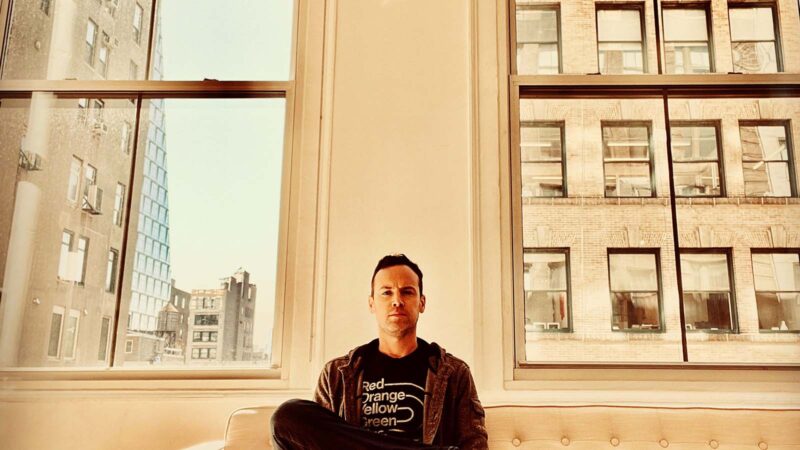
MF: This film has a lot of fighting and one-on-one combat. I think it’s to your credit that as I look at your background, you can’t be pigeonholed anywhere, which is a great thing. But at the same time, I would look at you and say, “Here’s Doc, he’s your basic heavy-action kind of editor.” Doug had faith in you, but did you ever think, “Wow, this is a little out of my comfort zone”? Or did the studio ever say, “Doug, we know you love Doc, but he hasn’t done heavy action before.”
Doc Crotzer: It wouldn’t surprise me if there were conversations between Doug and other people that I wasn’t privy to that were similar to what you described for that very reason. I don’t have a list of ten big-budget action movies under my belt. Given the cost of these movies, I imagine some people thought, “Why don’t we get someone who is a little more of a sure thing?” Knowing how Doug and I work together and how he believes in me, I imagine his response would have been, “No, this guy is the sure thing” in his mind, which is I’m sure why I wound up working on the movie at all.
It was fun going in because it felt like a new challenge. I’ve done a lot of action, but this is an action movie that also happens to be very funny. In the past, a lot of the features I’ve cut have been comedy movies that have action in them, like Shotgun Wedding. Chaos Walking had a lot of action, but that was its own kind of animal. So I knew going in that Road House would be a challenge. I was excited about it. I also knew that the fight scenes were going to be shot differently from how most movies do it, and how Doug had done it in the past. I think that’s one of the things that Doug got excited about. He saw Road House as an opportunity to approach fight scenes in a unique way.
When Doug directed The Bourne Identity, he saw it as an opportunity to approach fight scenes in a different way. That movie spawned a whole new way of cutting fight scenes in movies. So I think Road House was, in his head, the next version of that. Subsequently, I got excited about that challenge.
And to your point about being pigeonholed, that’s always something I’m thinking about. Editors don’t always have the luxury of being super strategic. Sometimes you’re fortunate enough to pick and choose between jobs, and sometimes you just gotta work. But whenever I can, I try to do things that are a little different from what I’ve done before. I especially try to do things that are different from something I just did because I don’t want to get pigeonholed as one thing or the other.
MF: You brought up Doug’s shooting style, which is something we’re going to touch on a few times here. I generally ask editors what they thought of the script when they read it, but something I don’t usually ask is, what was the first thing that you looked at? Did that inform anything or change anything that you had perceived going in?

Doc Crotzer: It does because it’s never exactly like what you imagined when you read the script. Hopefully, it’s more interesting and more dynamic. With this movie, the fight scenes and the style of shooting came to life visually in a way that you just can’t compare to reading what’s happening on a page. I think the way that our DP Henry Braham moved the camera was remarkable. His setup is a handheld rig that’s on some sort of specialized gimbal. It looks like a Movi situation, but it’s a version that allows for the quick movement that you see in the movie.
It’s quick but very precise camera movement where you don’t feel the traditional float of some of that gimbal stuff. It allows him to do these incredible movements and capture what’s happening on screen, like the choreography of the fights, in a way that you couldn’t do if you were on a dolly track. You couldn’t do it if you were on a Steadicam. It wouldn’t feel the same if you were simply handheld. That in and of itself gives the footage a distinct feel. It certainly informed how we were going to do things moving forward. The North Star was, whenever possible, if it felt completely believable, to just let things play out on screen.
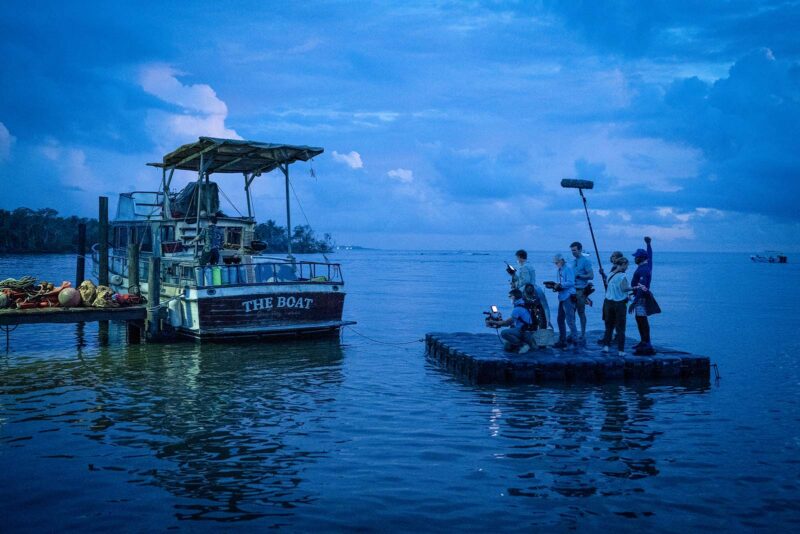
The fight sequences were designed and shot so we could stitch things together and do enhancements. You see punches hitting people in angles that you don’t normally see in movies. That’s because, traditionally, if you were in those angles, you would see the actors pulling their punches. You’d see there was a foot and a half between them, and it wouldn’t feel real. But because everything was meticulously choreographed, shot, and put together, we were able to use angles that you’d normally be cutting around because it wouldn’t feel real. From the beginning, that was one of the most exciting things for me.
MF: What was it like to work with Doug again after Chaos Walking? Were there aspects of your working relationship that evolved on Road House?
Doc Crotzer: One of the best things about working with someone multiple times is you’re always continuing to refine and develop a shorthand with each other. Throughout Chaos Walking, Doug and I developed a deep trust. With Road House, it was easier for me to slide back into it with him in our rhythms. I imagine he would say the same because by that point, we had worked together so much more than when I first started Chaos Walking. That makes a big difference.
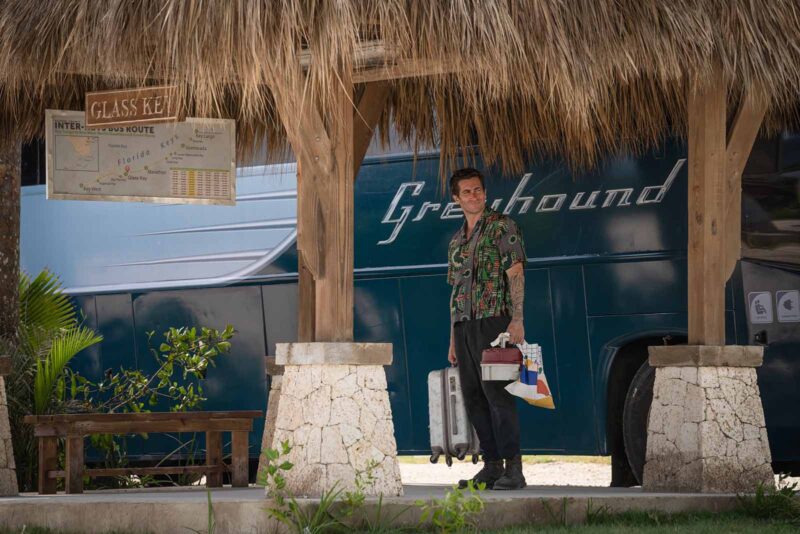
Any time a shorthand is possible, I’m all for it. Whether that shorthand is a communication shorthand between a director or an editor, or some kind of keyboard shortcut that saves me three seconds. All of those shortcuts ultimately give me more time to work on the creative part of moviemaking. The more time we have with the creative, the better.
MF: When you’re doing a reboot, a reimagining, whatever you want to call it, do you go back and watch the first one? Are you conscious of what you want to honor and what you want to approach differently?
Doc Crotzer: I went back and watched the original. I had already seen it multiple times, although I don’t know if I had ever seen it in one sitting. But I made a conscious choice to not go back and revisit it before starting this one. Having read the script, I thought, “There’s going to come a point where I will revisit this, but I don’t want it to be at the start. I want it to be when we’re further along with the movie. We have to make this one stand on its own first, because if we can’t, then it won’t be successful for audiences.”
The more time we have with the creative, the better.
Once we were there, we could be aware of the original and think about the dials that could be turned. How far do we want this homage, reference, or Easter egg to go? Do we want it or not? We needed to figure out the right balance that made the movie work for people who haven’t seen the original, who have seen the original but didn’t love it, and who love the original.
Towards the end of post-production, we went to a screening of the original Road House at the Alamo Drafthouse in Brooklyn. We took the whole crew. It was Doug, Joel Silver, and pretty much our whole post team. It was an absolute blast. It was the perfect reminder because we weren’t done with our movie, but we were close to being finished. It was the right time to revisit it.
I’m not sure how much Doug watched or referenced the original. I don’t think he did consistently. I’m sure Anthony Bagarozzi and Chuck Mondry, the writers, referenced the original when they were developing the script. They had so many smart morsels that made their way into the movie.
MF: There’s a restaurant in the film called The Double Deuce. Jake gets to drop the line “No one ever wins a fight”, which is one of Patrick Swayze’s iconic lines from the original. Sometimes on the Marvel movies, the editors will get a little Bible full of the things they want to hit in the film.
Doc Crotzer: We didn’t have anything formal like that. Our litmus test was always one, does it fit authentically with what’s on-screen? And two, does it make us smile or laugh? That was the test. If it felt fun and didn’t pull you out of the movie, then it worked.
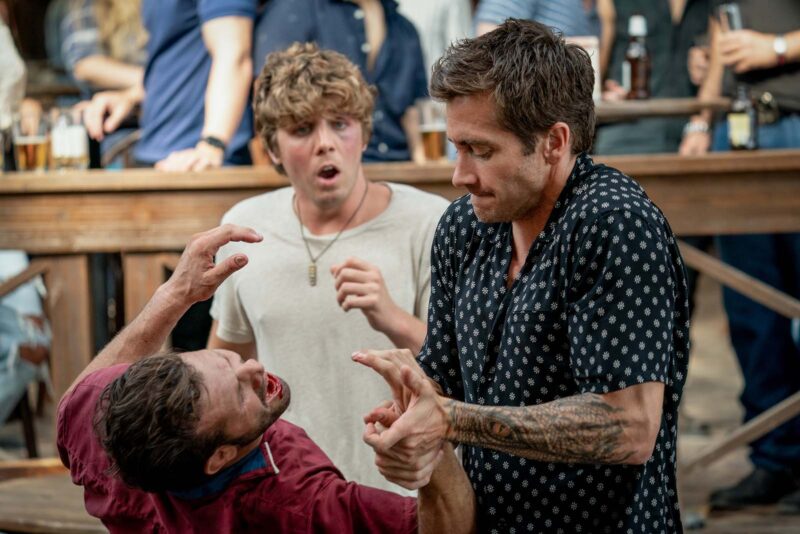
MF: You mentioned going to a screening in Brooklyn. I’m assuming you also cut in New York. Either that or you really, really wanted to go to that screening. Tell me where you cut, the setup, things like that.
Doc Crotzer: We cut the movie in New York at a place called Assembly Post in NoHo. We had a great team. Post was quite long on this movie because of the strike. We were close to finishing, but then the strike happened. So we worked on the movie for a while and then paused for a bit and came back to do ADR and our mix and final color. But yes, all of that was done in New York. The only parts of the movie that we did outside of New York were the audience previews. We did those in LA.
MF: Has your editorial setup evolved it all from Chaos Walking to Shotgun Wedding and now to Road House?
Doc Crotzer: It hasn’t changed too much. I try to keep it pretty simple. The biggest thing for me that varies project to project is whether or not I’m using one giant ultrawide monitor or three-monitors. I love the ultra-wides, but sometimes they go on the fritz and your monitor’s broken and it’s a pain. The three monitor setup is a little safer, I think. I go back and forth, but I love the screen real estate and having one monitor to immerse myself in. That’s probably the only thing that’s changed for me since we last talked about it. Everything else is pretty straightforward.
I use a vertical mouse now instead of a trackball because my wrist was hurting. But at some point, I’m sure my wrist will start hurting from the vertical mouse and I’ll go back to a trackball. Or I’ll go to the pad or whatever.
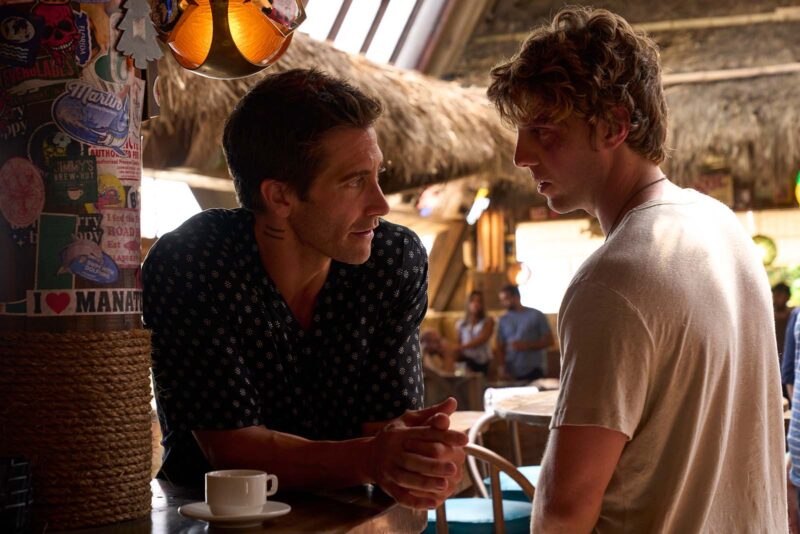
MF: It’s good to be adaptable as an editor. In terms of connectivity, sharing cuts with Doug, working with your assistant or the other crew, how are you connected? How are you sharing?
Doc Crotzer: For this one, we used Pix to distribute cuts and things. We had Jump Desktop so we could remote in if needed. I think the assistants used that, especially when there were requests for cuts at odd hours. But for the most part, Road House had everyone back in the office every day. It was kind of like the good old days, pre-COVID filmmaking, which was fun. We had a wonderful time together, and it was just such a special group of people. I think everyone enjoyed the fact that we were all in a space together. We had an office full of dogs and there was always something exciting going on outside of the work we were doing, which I think makes a big difference.
MF: Let’s talk about having everyone together. Tell me about the crew.
Doc Crotzer: We had a big crew. Our amazing post team in New York was headed by first assistant editor Ulysses Guidotti, first assistant Rich Molina, second assistant editor Alana Casto, VFX editor Dan Lyons, and music editor Jonathan Zalban. The VFX team was incredible. It was VFX producer Lauren Richie, coordinator Aron Anderson, VFX supervisor Mark Russell, post supervisor Jeff Penman, Taylor Hayes, and Dowen James.
We had a large team and we had a great team. It was one of the best experiences, if not the best experience I’ve ever had as far as working with people. It’s not realistic to think that you will all do every project together for the rest of your lives, but it sure would be nice because there was not a bad apple in the bunch. I think everyone had a wonderful time, in addition to being proud of the work that we were all doing together.
And I’d be remiss too, to not mention the Post Sound team. Paul Hsu, our brilliant supervising sound editor and mixer, Eugene Garrity, who was our mixer, and their whole crew, including Kent, Jacob, Craig, and Maya. The sound was such a huge part of the movie, and they did so much work from a very early stage through the mix. I’m so proud of everything that we all did together. It was just a lovely group.
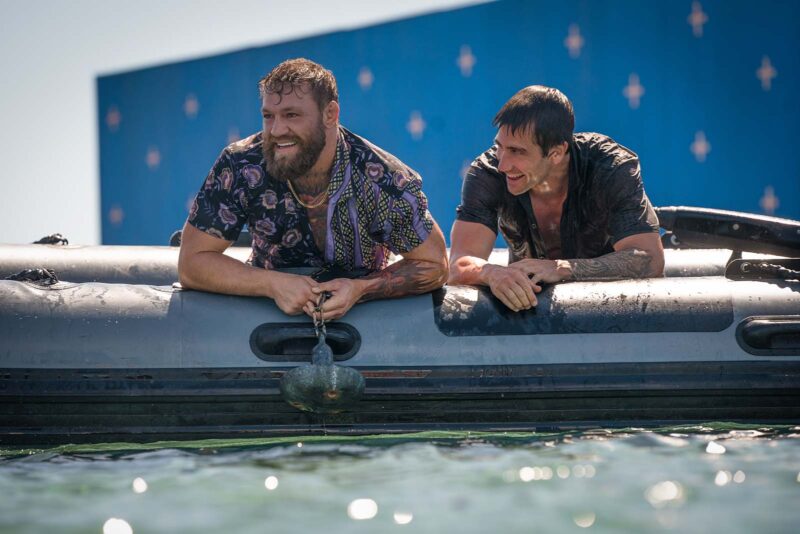
MF: Let’s talk about the story. I like to spend a few minutes talking about the opening of a film because that’s such a crucial component to getting the story going. The first character we’re focused on is Carter Ford, Post Malone’s character, and then you reveal the hero, Dalton. Even though we don’t start with him, the conceit of the film starts right away.
The character Frankie goes up to Dalton and says, “Hey I got this roadhouse in Florida.” Even though he’s not a “cooler” like Patrick Swayze was in the original, he’s an ex-UFC fighter. It’s a very expeditious opening. I love it because it says, “Hey, let’s get right to it.” I can imagine this opening might have been structured differently at the beginning, and then restructured and tightened. Tell me about how you built that opening.
Doc Crotzer: You’ve seen a lot of movies, Matt. You can see these things. This was not how it was written.
MF: I kind of figured.
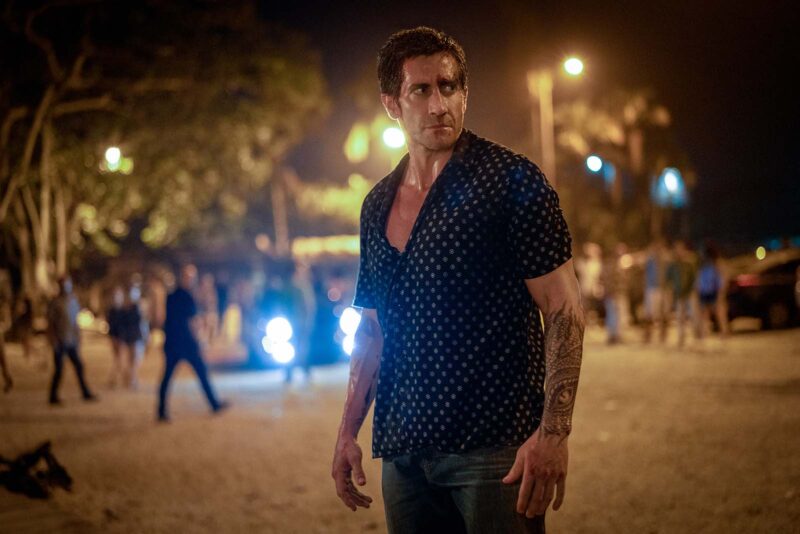
Doc Crotzer: That was one of the first things that I wanted to try once I got a feel for the movie. We had a much more traditional opening with all the components that you see in that scene. Dalton pulled up in the car, there was the exterior shot of that barn-warehouse fight place. Everything had the same components, but as it was originally structured, it was kind of quiet and slow.
Dalton pulls up, he walks inside, and this Post Malone fight is happening. And then Jessica Williams comes in, you check back in with Dalton, and then you kind of get into it as it is. But I felt like it didn’t grab you by the shirt and pull you in. Also, we were trying to figure out what the best hero introduction for Dalton was. That scene ends with a fun moment where Post Malone says, “I’m not going to fight this guy” and you’ve got kind of that hero shot of Jake standing up. He looks super strong, he’s getting paid the money, and he kind of laughs it off. So we knew we were building to that.
We kind of reverse-engineered it. We thought, “What’s the best way to end up there?” I thought, this is Road House. What’s a better way into the story than point-of-view punching someone in the face just to suck you in? Then you start to feel that world, that rowdiness, that violence? Also, that brings Jessica Williams in asking about Carter Ford. You don’t know who Carter Ford is at that point, so that gets people asking questions like, “Where am I? What is this?” The answer to that question effectively is, “This is Dalton” and he comes in. It’s a much weightier intro when you see him in the hood but don’t see his face after you’ve started to ask all those questions.
So much of this process is always about trying things and seeing if they work or not. For me, the best way to do that is to try it and then show it to people who aren’t in the room all day. It’s not about me deciding whether or not I think something works in a vacuum. And it’s not Doug deciding whether or not he thinks this works in a vacuum. It’s about pulling in someone from our team down the hall. Our Post PA Dowen was always game to come in and watch something. And he’s smart. He has great taste and he’s the perfect audience member. Just hit play and see how he reacts. That tells you everything you need to know.

We did that on a larger scale with our friends and family screenings. We had some screenings with the original opening and some screenings with the reworked opening. The new opening seemed to work for people. It became something that people wanted to talk about afterward because they liked it. That was a good sign for us.
MF: Road House is not just fighting. There are personal beats and comedic beats and things like that in the film. Can you compare the two types of scenes? Does an action scene feel harder because of the kinetic style of editing? Or does a more personal, slower sequence feel more challenging because the edits are more obvious? If you get a cut wrong in a personal scene, it’s going to strike a dissonant note whereas in a high-intensity action scene, you may not feel it the same way.
Doc Crotzer: That’s a great point. With this film, the action scenes were their own set of challenges and the process was something we were all figuring out as we went. But a lot is going on visually, which makes the audience much more forgiving than in the more personal scenes. I think this movie clicked after we got some of those smaller scenes dialed in. One of the scenes I love is the scene where Jake interacts with the little girl whose dad owns the bookstore. It gives you a different view of the character. It gives you a moment to breathe, and it is grounded in a neat way.
We had to find moments where we could ground things because we knew that there were so many other things that were giant, insane, and over-the-top. Finding the opportunities to ground the story was something I was always looking for. We would get into those scenes, rework them, and get them dialed in just right. Then, the whole movie would start to feel better because now we had a slight glimpse into Dalton’s character through the eyes of this little girl in the bookstore, or the scenes where Dalton and Ellie are talking. Those scenes gave us more insight into him. He’s still a mysterious character, but you get glimpses and that makes you lean forward and want to watch the rest of the movie.
MF: For scenes like that, you have the script to draw from. But in an action sequence, is there anything in the script that tells you how the sequence should go or feel?
Doc Crotzer: You use the script as a guide knowing, “Jake’s going to say this line, and then Conor is going to say that line.” You have that as your blueprint. But all of the action was choreographed meticulously in this space. Garrett Warren, the second unit director and stunt coordinator, and Steve Brown, the second unit stunt coordinator, are just incredible. They worked tirelessly to get all of that laid out. They would present it to Doug and Doug would work with them to get it to be what he wanted. By the time they’re shooting, the fight is like a choreographed dance.
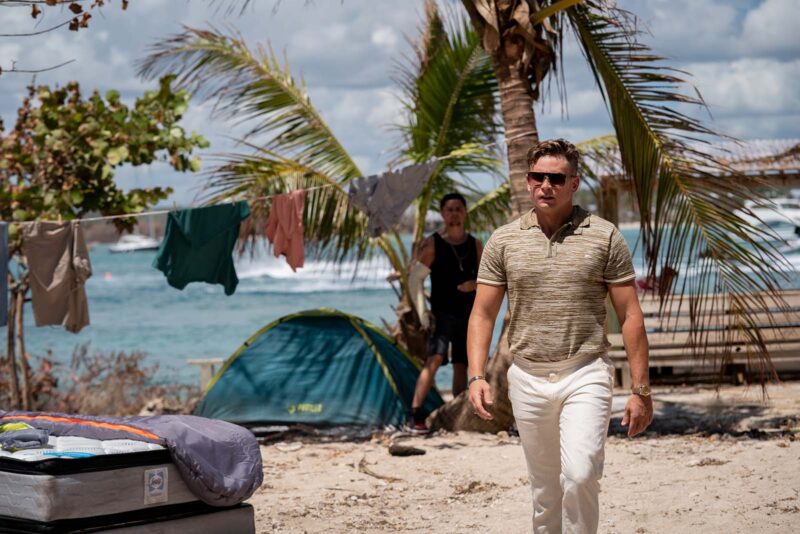
As I mentioned with the footage, I would look at the raw takes, and it was very clear. They would tell me, “Okay, we’re going to be in this shot for this moment until the camera pans over here. Then we’re going to stitch this shot with that shot to make it feel like one shot for the next moment.” Everything was very well planned and well shot. It was a different kind of challenge, putting it together, because you were looking for invisible ways to put things together. The more things felt like one shot, the more it would be like what Doug was going for. So whenever we could make it feel like that, we did.
MF: When you say having it well planned out or laid out for you, we’re talking about stunt vis?
Doc Crotzer: Yeah, there was stunt vis. The process of making some of those fight connections look real was something that they developed leading up to the movie and tried with stunt vis videos very successfully.
The stunt work required multiple passes. The brawl at the bar between Jake and Conor, which is one of my favorite scenes, had multiple passes. In the sections where Jake and Conor have hand-to-hand combat stuff going on, there would be a traditional Hollywood pass with pulled punches, just the normal way of doing it. That was like the backup plan, but we needed to have it. Then there would be a pass where Conor would step out and Garrett would step in with a pad, holding it where Conor had been. Jake would stay in the frame and they would do that shot again, matching the exact movement and everything.
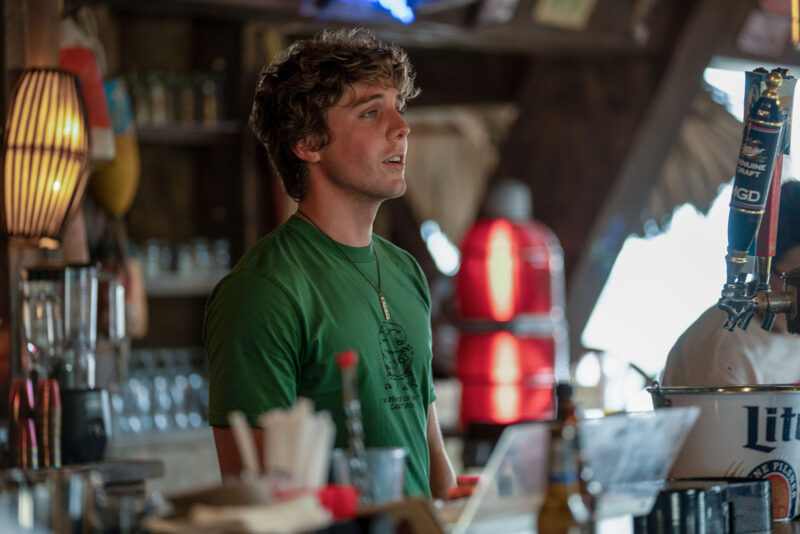
But none of it was motion-controlled because Henry’s got his specialized camera rig. It is a handheld stabilized rig. Nothing was on a motion control camera, which is also what makes this whole thing kind of crazy. But then they do the take and Jake would beat the crap out of this pad. And these guys were so rehearsed. Jake was in fight training for months leading up to this movie. He was like a real fighter. Of course, Conor has a very high level of precision with his fake punches. Jake would talk about how, in the Hollywood pass, Conor was so precise with his fists. He could get within millimeters of Jake’s face consistently every time and never hit him. But imagine how scary that is.
So there’s the Hollywood pass. Then there’s this past where Jake’s doing the punching to a pad. Then Conor comes in, Jake steps out, Garrett’s holding a pad for Conor, and Conor beats the crap out of the pad. After that, both guys step in and you do a few passes very slowly, anywhere from twenty-five to ten percent of the speed. And their fists are connecting with each other’s faces so that you’re physically seeing the smashing that happens when a fist hits a face and the head movement that happens.
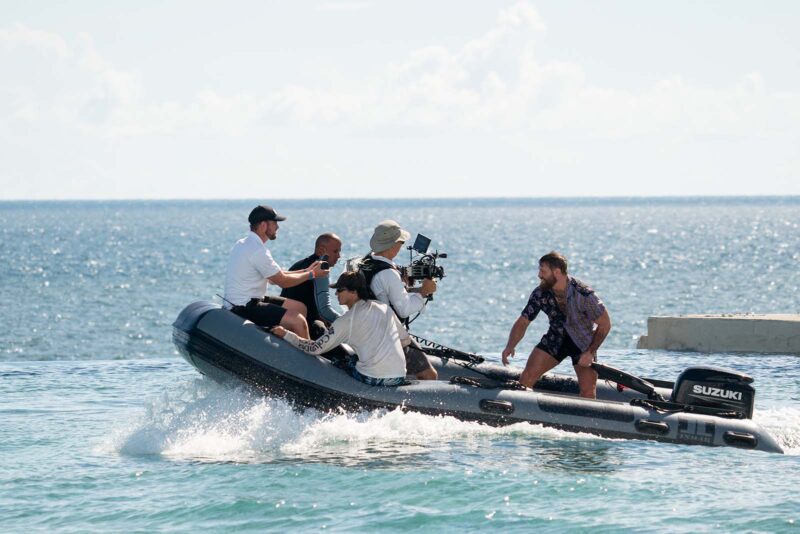
One of the things that always looks fake in Hollywood fights is that people’s fists and their head movements are never perfectly in sync because they’re just guessing. No matter how rehearsed you are, you’re still just guessing. So that pass is about getting movement in body parts and faces from impacts based on the actual physical pushing of it, and all the distortions that happen on the skin. So we’d have all of that and then start to stitch it together, trying to make it look as seamless as possible. It was wild.
MF: I’m assuming those pad shots are exclusively the POV shots that you see. Or is there a way to use those shots where you’ve removed Conor or Jake? Did you do something digitally or is it just the POV stuff?
Doc Crotzer: No, it was all of the fight stuff, or most of it, not just the POV stuff. There’s a ton of rotoscoping happening, so you end up with a background plate for the scene that incorporates all the patrons in the bar. You’re ending up with a Conor element, a Jake element, and then you’re painting around pads and stuff. You want to see Jake’s fist and what that does to his arm when it impacts the pad. So you’re painting out the pad, you’re putting Conor in, and then you’re taking the Conor elements—where he’s looking like he’s getting hit, that distortion—and you’re putting that on him and trying to make it look like it’s all one shot.
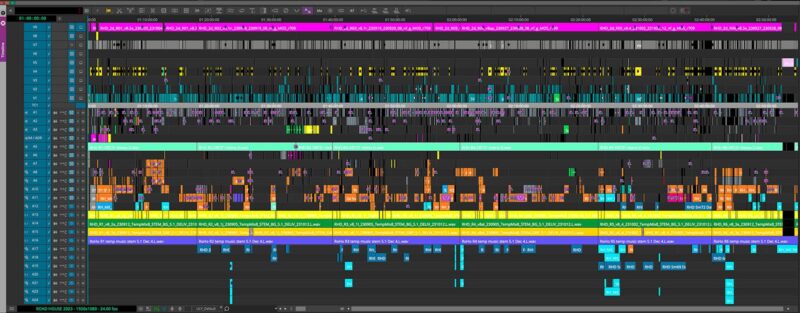
MF: I don’t know, Doc. That sounds like a lot of work.
Doc Crotzer: It was. It was a lot of work for a lot of people for a long time.
MF: Would you use the Hollywood pass as your, “If this works, then we know that we can then go in and do the replacements”? Or was it just, “We’re gonna use the Hollywood pass for this section. Then I’m going to try the pad fight for this section.”
Doc Crotzer: The Hollywood pass was a great roadmap. Going back to your question about how much does the script tell you, not much. But the Hollywood pass told me a lot because that was a visual representation of the intentions. It just looked less real than we wanted it to because they’re pulling punches.
We always did the process that I described for all the fighting. There were some instances in the movie where it was more dynamic and it looked real to cut to the Hollywood pass, but more often than not, the fighting that you see on screen is some version of this process. Each moment was a little different. In some moments it wasn’t someone punching a pad, but instead, it was Jake holding a pad and hitting someone with the pad. So each moment lent itself to some specificity, and then you figured out how to put it all back together so that it feels real, seamless, and invisible.
MF: Doc, I had all of these questions about what tricks you used to do these fight sequences and they all just went out the window. Is there anything left to the tricks? I was going to ask about speed ramps, but you’ve got people performing at twenty-five percent. I assume that’s a speed ramp. I’ll just leave it open-ended, Doc. What other tricks are there beyond the amazing array of things you described to create a fight sequence?
Doc Crotzer: All the normal fight sequence tricks were still deployed. Speed ramps, adjusting arms, and sometimes moving people’s bodies in the frame so they’re a little closer to where they’re going to get impacted. Cutting out frames here and there. Invisible cuts around people’s backs and many more things like that. All the traditional tools were deployed as well within this new thing that we were trying to figure out. It was all part of the soup we were making.
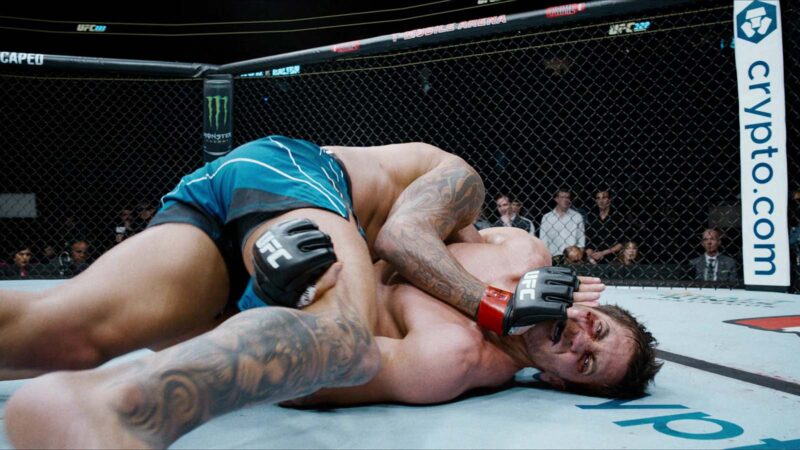
MF: Part of that soup included live music. You had these big fight sequences with live bands playing. How did you cut those sequences together? You’ve got a band performing amidst all this other noise going on.
Doc Crotzer: They were all there and for the most part live to playback. It was a great texture. Doug was very adamant about having the live music in the bar whenever we were there and that the band would not just be in the background, but would have moments where they were part of the fight. Somebody might throw a bottle at them, or the drummer might decide to stop playing and jump into the brawl. Doug was very keen on that. So with that in mind, the way that a lot of the stuff was shot, it just incorporated them in the background.
You can imagine with that comes an extra set of challenges when you’re cutting a scene together. All we’re trying to do when we’re cutting a scene is to give the illusion that it’s all playing out in real-time, but none of it is ever playing out in real-time when you’re shooting it. So naturally, parts of songs wouldn’t quite line up. You’d be three seconds later on the band, which would mean they were three seconds later into the song, and that’s the best take for that moment. But then there’s a better take for a different moment.
It was all the normal stuff that comes with playback music numbers and dialog scenes on top of playback music, except much more complicated. It’s the same kinds of walls that you run into where things don’t match. We just had to find our way around it and work through it.
MF: When you were describing the different elements of the fight scene, I was imagining a timeline where you layered up from all those different things. But on the audio side, how did you build up the music—all those different stems, the dialog, the walla impact of the punches? There’s a crazy amount of audio elements going on at the same time as the music.
Doc Crotzer: We were fortunate on this one because we had an amazing sound team. Paul Hsu, our supervising sound editor and mixer, was involved very early in the process, starting to do passes on the movie. I don’t think we would have been able to do it without him at that stage. He was building tons of things early on. By the time we were putting the movie in front of people, Paul had already taken a pass on it, so it was already sounding good.
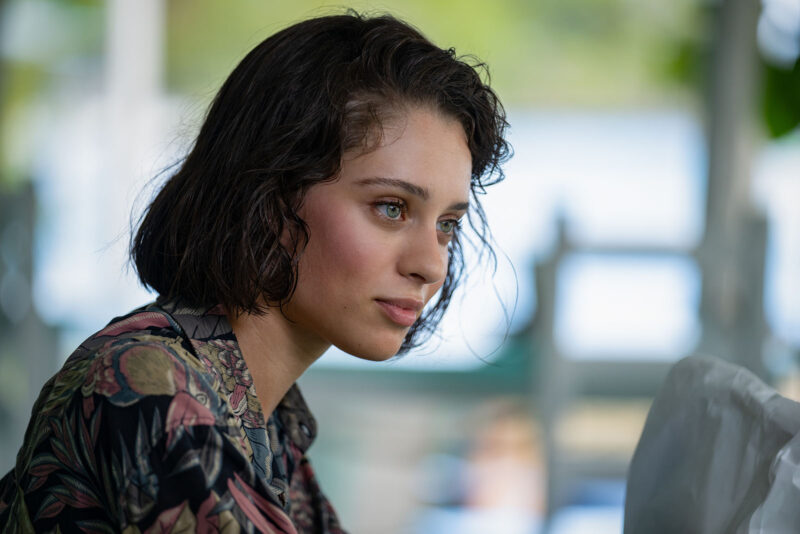
You make choices about sound in the same way that you make choices about the picture. If you’re looking at a couple of different kinds of coverage in a scene, you’re deciding which actor you’re going to be on at a certain time. When you get to a bar that’s busy like that, you’re doing the same thing with your ears. You’re deciding, “Is it more important to hear this guy screaming at the guy he’s about to tackle? Or is it more important that we have the music driving us?” And do you just want that yelling to be a texture that you feel, maybe not as articulate, where you don’t understand what he’s saying? Or is it vice-versa? Sometimes we want to feel the presence of the music in the background, but what’s important is what is being said. You should approach a sound edit the same way you do a picture edit. It’s like pulling focus, but with your ears.
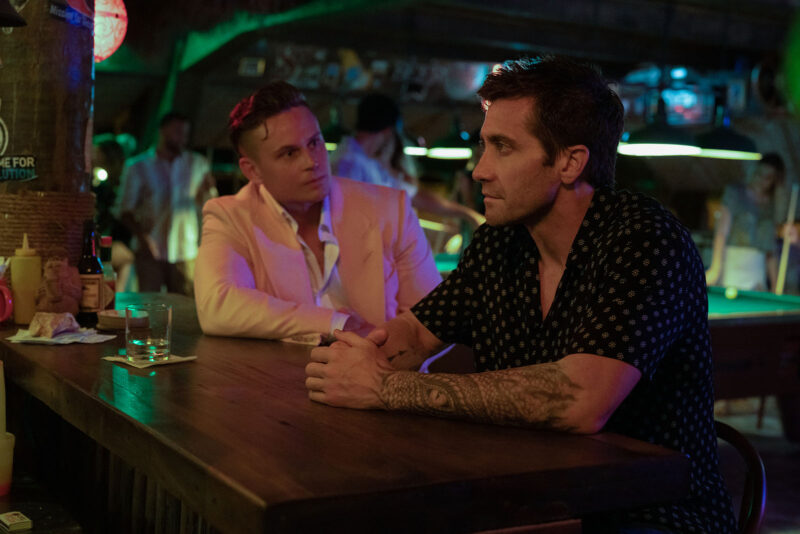
MF: When you’re trying to make both of those things work, do you isolate them? In other words, if you’re working on a fight sequence, do you try and do it without any sound so that you visually know that it’s working?
Doc Crotzer: Yes, I often turn off the sound when I’m cutting to make sure things work and that I’m on the right track visually. I also do it as a check, even with dialog scenes sometimes if different takes don’t quite match up, to make sure that everything visually works well enough. Then I know that it’s a matter of the sound that’s pulling me out and we can fix it.
MF: I think you mentioned this when you were talking about laying out the action scenes. You talked about pieces getting stitched together. Do you identify key beats within a scene first and build around them? Do you say, “I love the way this punch connects” or “I need this move to keep the geography correct?”
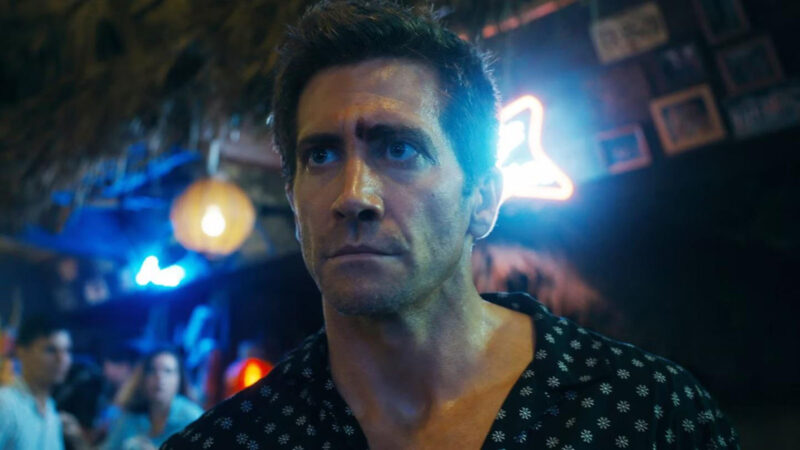
Doc Crotzer: Yeah, I think so. A lot of times it’s about working in the most exciting moments or the hero moments of the scene. Sometimes those are clear in the script, sometimes they become clear once you see them visually. You ask, “What are the coolest shots of each moment?” Oftentimes I’m thinking about, “How do we paint ourselves into this corner? This is the corner we want to be in. What’s the best way to paint ourselves into it?” Then, we need to figure out how to get into the next corner. With any action scene, you know going in from watching the footage where the real exciting stuff is. Then it’s about getting from A to C so that you’re highlighting each of those moments in the best possible way.
MF: I know that you’re a big proponent of ScriptSync, and typically people use that tool to manage dialog. But I’ve also heard of editors using it for action. They’ll group kicks and punches and things like that, just to be able to quickly go through different punches inside that script window. Is that something you tried to do on Road House?
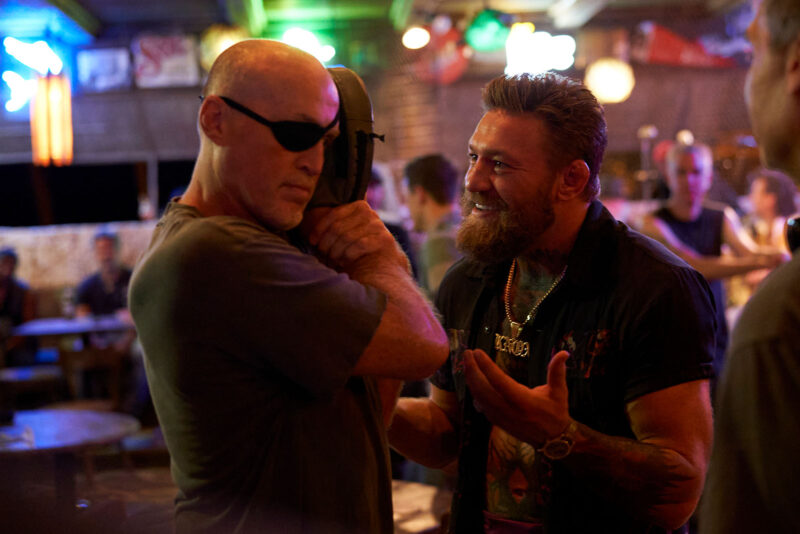
Doc Crotzer: Not on this one, but I have done that in the past where we make our script in ScriptSync. We put in our text and use it just like you would for dialog but for action beats. It’s very effective. This one was a little different because we weren’t cutting the action traditionally. We weren’t cycling through to say, “Which of these punches looks the most believable?” I didn’t use it in that way for Road House because there were different considerations as we were evaluating those shots and figuring out which ones to stitch together. But it is a very effective tool as far as grouping things other than just dialog.
MF: When you have a very tightly choreographed and cut action sequence and you’re going through these reviews and Doug says, “We have to lose a few seconds here” is it more challenging in that kind of scene to make changes at the end for timing?
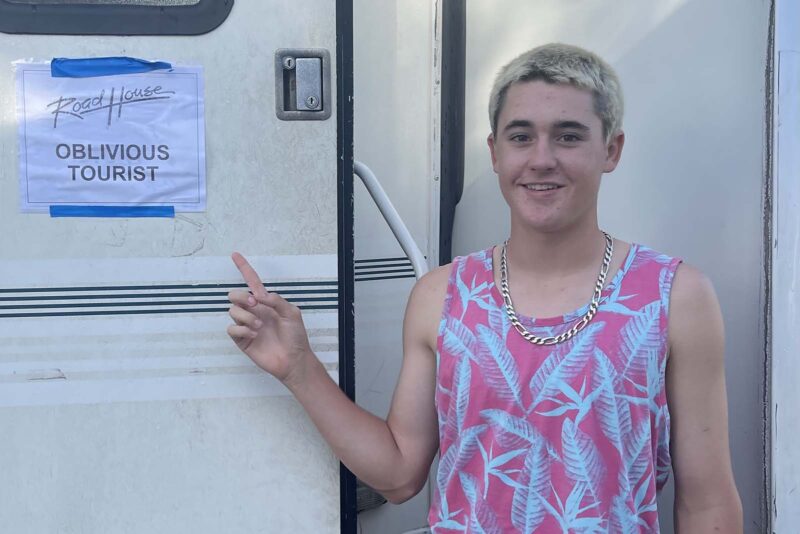
Doc Crotzer: It can be when it’s that intricately choreographed. Sometimes it’s not as easy as just pulling out a punch or two. There aren’t a lot of redundancies in these fights. Of course, there’s a moment towards the end of that brawl where Jake is being held back and Conor is just punching him and punching him and punching him. That was a moment where we experimented with how many punches to have. We had versions where it was one punch, we had versions where it was twice as many punches as what ended up in the movie, and everything in between.
But in a lot of other instances, they were moving around too much within the space. There might be a punch thrown, but the next thing isn’t a punch, it’s a kick that trips someone and then suddenly they’re on the ground. So you can’t lift that kick out because then they teleport to the ground. So you can imagine because it was all wrapped up together, a lot of that stuff was what it was. Of course, we found ways to tighten things where we needed to. But a lot of that stuff stayed as it was shot on the day because that was what was baked in from a very early and confident place in Doug’s mind.
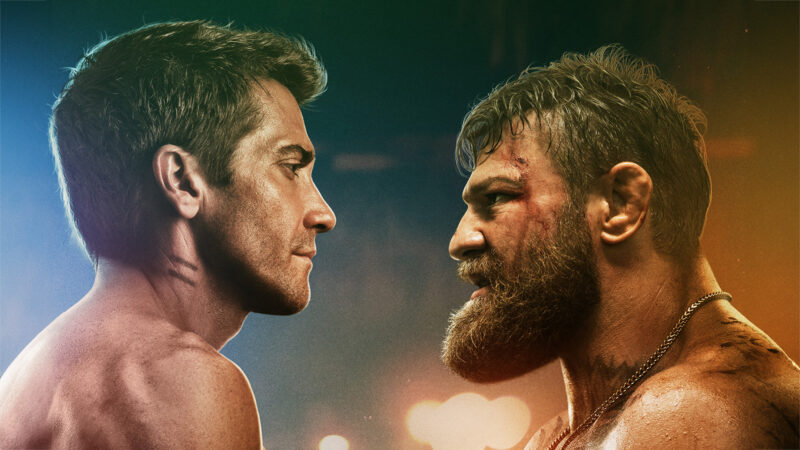
MF: Road House has two very different leads in the form of Jake Gyllenhaal and Conor McGregor. You have Jake, who is a very well-trained actor, and then you have Conor, who is acting for the first time. Tell me about what you were seeing in that footage and the way that Doug was working with them.
Doc Crotzer: Conor and Jake come at acting very differently, and their performances in the movie are very different from each other. That was one of the challenges, I think. Comparing those two performances encapsulates one of the biggest challenges with this movie, which was the tone. We had to figure out how to balance Jake, who gave a very real, grounded performance as Dalton, with this larger-than-life, over-the-top agent of chaos that Conor brings in. It was interesting to watch.
Conor has the discipline that you would expect from someone who is at the top of his sport and what it takes to get there. Coming into it, he was committed to doing whatever he needed to do to make the acting work as well as his fighting does. I think he and Jake found a good rhythm with each other, and there was a lot of mutual respect between them. These are two people who are at the top of different games, but they have a respect that they’re each at the top of their own game. As I watched them work together, they got better and better. They have chemistry on screen. The tension that developed between them was a lot of fun to watch.

Finding the tone between those two characters was the biggest tightrope walk of the movie. It had to be serious enough to show that there were high stakes and make you emotionally connect with Dalton, but it couldn’t be so serious that you didn’t have permission to laugh. That was the key. It wasn’t that the movie was taking itself too seriously. We never let the movie take itself too seriously in our minds. But we wanted to make sure the audience didn’t feel like the movie was taking itself too seriously. So we were always looking for moments just on the edge that we could undercut with humor.
One of the best examples is when Jake kills the guy in the pool. Then he’s taking the body out and he throws it in the back of the pickup truck. And then you go to Arturo, who is hilarious every time he opens his mouth, and you have that comedic moment. So it was a trick to make sure that we didn’t go too far with the drama, but also that the movie didn’t become so jokey that the stakes weren’t real, or that the emotional throughlines didn’t work. Whether it’s Dalton’s internal story, or Dalton and Charlie, the little girl at the bookstore, you want it to work. And if you’re too jokey with everything else, those emotional stories won’t work.
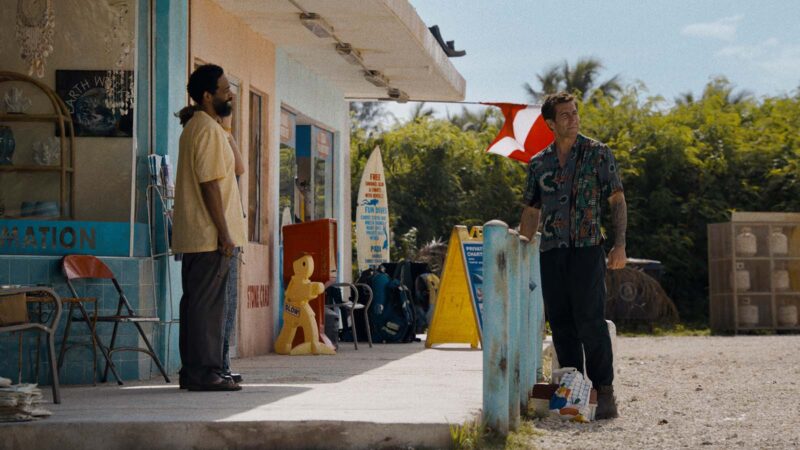
MF: I’m glad you brought up the tone and the challenge of balancing it. Jake’s Dalton is, I think, a little more complicated than Swayze’s. He has a darker past, a history that you are careful to reveal over time. There is a flashback to when he was a UFC fighter. You have to move things around, you’re having to tighten, expand, and keep the pace going. But you also have to reveal those things about him. You have to go back to that flashback and show a little more each time. Tell me about how that element might have moved around or the challenges of working that in.
Doc Crotzer: That’s a great question. We experimented a ton with flashbacks. The biggest thing, and this is so important to editing, is asking yourself, “When is the best time for the audience to know a piece of information?” In this movie, the big piece of information was that Dalton did something in the ring that was irreversible to another person. And you have to ask yourself, “When is the most interesting time to find that out?” Is it more interesting to meet the guy and have the flashback early and ask, “Wow, he was a UFC fighter? And it looks like he killed somebody in the ring. And now he’s a bouncer?” That’s one version.
When is the best time for the audience to know a piece of information?
Many other versions lead us down the path of ultimately waiting to reveal the full story until after you’ve been on this journey with Dalton. A lot of that, I think, is trial and error. The script was a guide and where we ended up was not too far off from the script. It wasn’t something we were coming out of the gate with. But each of those flashbacks is sort of its own little pod that you can slide around the movie. You can turn dials on a character or a scene by having the flashback at the beginning or end of a scene. That can swing a scene’s direction wildly.
We experimented a ton with where those flashbacks went and how many there were. I believe there are three in the final movie. We tried versions with two, we tried versions with four, and it wouldn’t surprise me if we went further. It was a lot of trial and error, putting the movie up in front of people, and figuring out what feels good.
If the movie’s too long, you can feel it in a room. Then you have to ask yourself if it’s feeling long because you have too many flashbacks. You also have to think about what new information each specific flashback is giving you. What warrants us having a flashback here? It can’t just be another flashback to when he was a UFC fighter. That’s boring. So we wanted to make sure that we were building each flashback to that end. With each flashback, we were asking ourselves, “What are the pieces that we want in this flashback that weren’t in the last one?” Sometimes we were moving pieces from one flashback to another to try and just modulate that to the sweet spot.
Already a star in the Florida Keys, Fred the Tree is now going to Hollywood. The tree clinging to a remnant portion of the Old Seven Mile Bridge, plays a pivotal role in the remake of the 1980s cult classic "Road House," starring alongside Jake Gyllenhaal. https://t.co/WBrKVHaLcO pic.twitter.com/jwRNx5BpID
— The Florida Keys (@thefloridakeys) December 1, 2022
MF: You’re cutting these fantastic fight scenes in a small environment. How do you make sure your cuts are right, and the timing is right, when you’re working on a small screen? Did you have to see it on a big screen to know, “Yes, I’ve got it. I don’t have to make any changes.”
Doc Crotzer: It always is instructive to see it in different sizes, whether it’s on a big screen in a traditional edit room or on your phone and everything in between. I think that a film is always going to feel different in different sizes. With Road House, we were always putting it together thinking about what it would feel like on a big screen. I don’t think we ever swayed from that approach.
We did a lot of audience previews. We also did some internal screenings of our own in the screening room at Assembly, where we were cutting the movie so that we could see it big. As we were getting ready for the audience previews, we were on a mix stage with Paul, our sound mixer and sound supervisor, watching it huge as well. So we were seeing it on a big screen a lot. It wasn’t always watching on a small screen, which was helpful. It’s always a good gut check on things.
But when you see it big, you see imperfections that make cuts bump. You don’t notice them on your phone or a computer monitor. It was good to make sure that the film was as smooth as it could be. Of course, there were lots of cuts in the movie that were designed to not be smooth. They were designed to be visceral and a little different. But when you intended for things to be smooth and for the cuts to be invisible, you want them to be that way. I think seeing it big always helps.
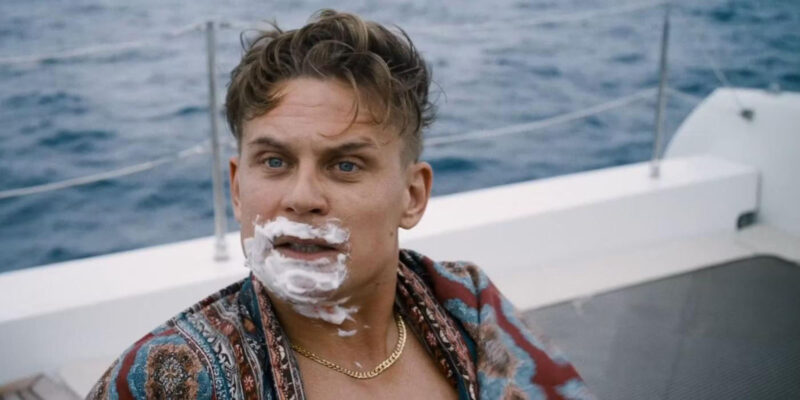
MF: Above all else. This is a very fun movie. You should have fun watching it. You certainly should have fun making it if at all possible. So I’ll ask you this, Doc, what was your favorite scene from the film to work on?
Doc Crotzer: This is going to sound crazy. I probably have a different answer for this every day, but you’re asking me today and I’m just thinking about the scenes with Dalton and Charlie, the little girl. And it might sound crazy because we are talking about this big fight movie, Road House, but I got a lot out of reworking those scenes until we figured out what felt right for their relationship. There was something sweet and simple and charming about it. I’m looking back on those scenes rather fondly, too, because once we got those right, I saw the impact it had on the rest of the movie. That was super fun.
Then, of course, I loved working on all the fight scenes and the boat chase scene. All that stuff was great. I also love the showdown with Jake and Conor at the end. It’s hard not to like that unless you don’t like violence. Then it’s easy not to like that. But the scenes between Dalton and Charlie are just sweet little scenes that I think turned out well in the movie. I think it probably surprises you that this movie has that kind of sweetness.
MF: Doc, for our last question, I have an audience question. I have to say I don’t always take audience questions, although I probably should because my questions are terrible and getting worse by the year. But I have this one question that came in for you.
Doc Crotzer: Okay.
MF: This is from someone named ‘D. Liman’. It says, “Dear Doc, there are big personalities on screen, for example, Conor and Jake, and big personalities in your edit room like Doug and Joel. Can you speak to managing all of that?”
Doc Crotzer: Sure. I can speak to managing all of that. It’s great that Doug has self-awareness about it as well. I appreciate that. It’s always tricky with these movies when multiple creative, smart people do not have the same idea about what the movie should be. I think both Joel Silver, the producer, and Doug, the director, would say the same thing. They would say that we ended up somewhere between the tastes that they gravitate to. Their styles, even though they’re very different from each other, complemented each other on this project.
There were times when Joel was pushing for something to be a little more popcorny and big. And there were times when Doug was pushing for a moment to be grounded and real. Ultimately, there were lots of disagreements, and we tried different things. We had multiple versions of the movie based on these different preferences. But we landed on a sweet spot between Doug and Joel’s tastes, and I think that made for a better version of the movie.
As for managing all of that, sometimes you are an editor and sometimes you are just a listener or a therapist. I just want to do great work. Amazingly, we get to do this for a living, so let’s have fun with it. Let’s try things. Let’s not argue. Instead of spending fifteen minutes arguing over whether or not we should try something, let’s just try it. Then we can watch it, and we can see if it’s better or worse. Then, if we still disagree about it, we can go down the hallway and we can grab Dowen or whoever from our team and have them watch it. They don’t know who thinks which version is better. We can just say, “What do you think? Which one did you like?”
That’s always my approach. I try to come at everything from the practical, pragmatic standpoint of, “Hey, we’re disagreeing about things, but we can get to answers pretty quickly.” Also, let’s just recognize that everyone is in it for the same reason. Everyone on Road House believed in what they were doing and their hearts were in it, both Doug and Joel, and that was clear. It was clear for the rest of us too, so I try to be respectful of that with each person.
MF: Well, let it be said that, whether you need an editor, a listener, or a therapist to manage those big-time personalities, you have to call the Doctor.
Doc Crotzer: That’s a good one. I’ve not heard that before. Maybe I should put that on business cards.

